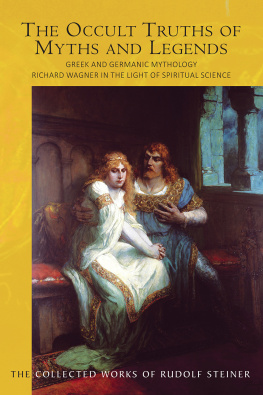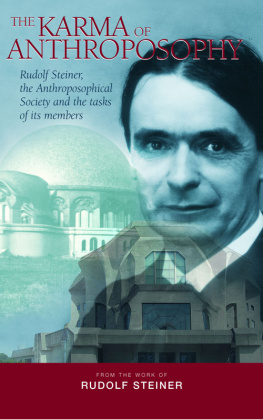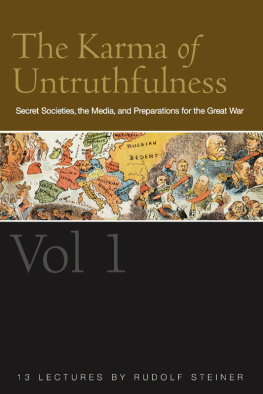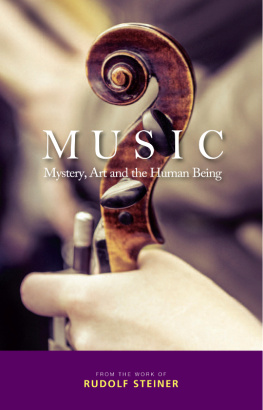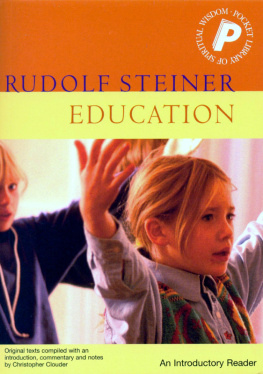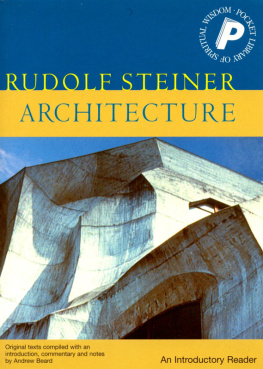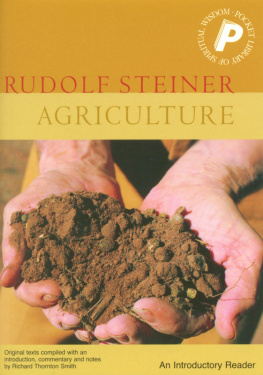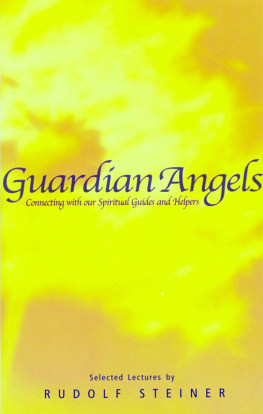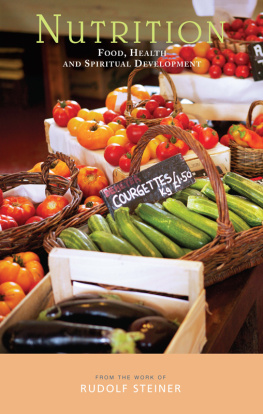Rudolf Steiner - The Night: as a Wellspring of Strength. Sleep, Spiritual Encounters and the Starry Firmament
Here you can read online Rudolf Steiner - The Night: as a Wellspring of Strength. Sleep, Spiritual Encounters and the Starry Firmament full text of the book (entire story) in english for free. Download pdf and epub, get meaning, cover and reviews about this ebook. year: 2018, genre: Religion. Description of the work, (preface) as well as reviews are available. Best literature library LitArk.com created for fans of good reading and offers a wide selection of genres:
Romance novel
Science fiction
Adventure
Detective
Science
History
Home and family
Prose
Art
Politics
Computer
Non-fiction
Religion
Business
Children
Humor
Choose a favorite category and find really read worthwhile books. Enjoy immersion in the world of imagination, feel the emotions of the characters or learn something new for yourself, make an fascinating discovery.

- Book:The Night: as a Wellspring of Strength. Sleep, Spiritual Encounters and the Starry Firmament
- Author:
- Genre:
- Year:2018
- Rating:3 / 5
- Favourites:Add to favourites
- Your mark:
- 60
- 1
- 2
- 3
- 4
- 5
The Night: as a Wellspring of Strength. Sleep, Spiritual Encounters and the Starry Firmament: summary, description and annotation
We offer to read an annotation, description, summary or preface (depends on what the author of the book "The Night: as a Wellspring of Strength. Sleep, Spiritual Encounters and the Starry Firmament" wrote himself). If you haven't found the necessary information about the book — write in the comments, we will try to find it.
The Night: as a Wellspring of Strength. Sleep, Spiritual Encounters and the Starry Firmament — read online for free the complete book (whole text) full work
Below is the text of the book, divided by pages. System saving the place of the last page read, allows you to conveniently read the book "The Night: as a Wellspring of Strength. Sleep, Spiritual Encounters and the Starry Firmament" online for free, without having to search again every time where you left off. Put a bookmark, and you can go to the page where you finished reading at any time.
Font size:
Interval:
Bookmark:
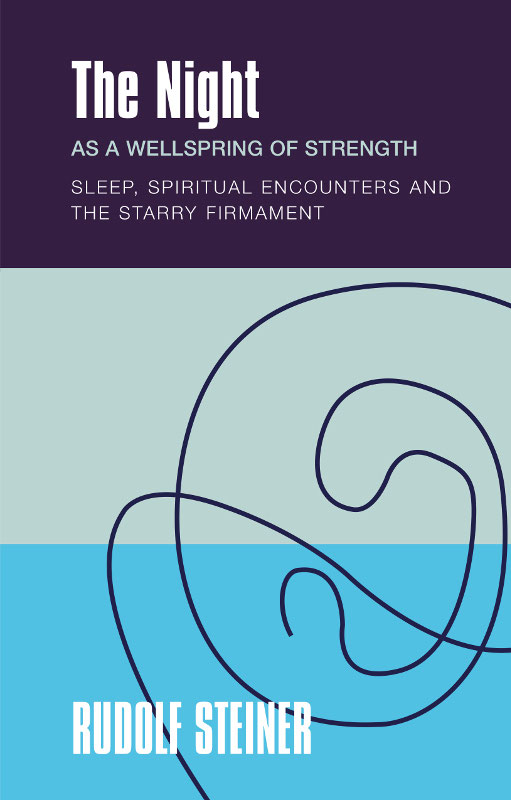

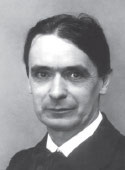
RUDOLF STEINER (18611925) called his spiritual philosophy anthroposophy, meaning wisdom of the human being. As a highly developed seer, he based his work on direct knowledge and perception of spiritual dimensions. He initiated a modern and universal science of spirit, accessible to anyone willing to exercise clear and unprejudiced thinking.
From his spiritual investigations Steiner provided suggestions for the renewal of many activities, including education (both general and special), agriculture, medicine, economics, architecture, science, philosophy, religion and the arts. Today there are thousands of schools, clinics, farms and other organizations involved in practical work based on his principles. His many published works feature his research into the spiritual nature of the human being, the evolution of the world and humanity, and methods of personal development. Steiner wrote some 30 books and delivered over 6000 lectures across Europe. In 1924 he founded the General Anthroposophical Society, which today has branches throughout the world.
Sleep, Spiritual Encounters and the Starry Firmament
Selected and compiled by Edward de Boer
RUDOLF STEINER PRESS
Translated by Matthew Barton
Rudolf Steiner Press,
Hillside House, The Square
Forest Row, RH18 5ES
www.rudolfsteinerpress.com
Published by Rudolf Steiner Press 2018
Originally published in German under the title Die Nacht als Kraftquelle by Futurum Verlag, Basel, in 2013
Futurum Verlag 2017
This translation Rudolf Steiner Press 2018
All rights reserved. Apart from any fair dealing for the purpose of private study, research, criticism or review, as permitted under the Copyright, Designs and Patents Act, 1988, no part of this publication may be reproduced, stored in a retrieval system, or transmitted in any form or by any means, electronic, electrical, chemical, mechanical, optical, photocopying, recording or otherwise, without the prior written permission of the copyright owner. Inquiries should be addressed to the Publishers
A catalogue record for this book is available from the British Library
Print book ISBN: 978 1 85584 544 2
Ebook ISBN: 978 1 85584 500 8
Cover by Morgan Creative
Typeset by DP Photosetting, Neath, West Glamorgan
All of us have a picture of the night, as we do of the daytime. The night is a realm of quiet, when we areusuallyasleep. Each of us has a personal relationship with night-time, with sleep and the images of dream life, or with the starry heavens to which we raise our conscious gaze. The stars appear to many of us as the mysterious harbingers of an expansive, light-filled world.
Anthroposophy can help illumine for us this star-sown realm of wisdom, the world of the night, accompanying us through its vivid and encompassing realities.
In his lectures and teachings Rudolf Steiner pointed repeatedly to the significance of the night, and it acquires central importance in various esoteric exercises. One fundamental exercise in the anthroposophic path of schooling, for instance, is the review of the day undertaken in the evening, before and in preparation for sleep. Further meditative exercises start here too, often involving a two-part practice to be done in the evening and then the following morning, as prelude to, and then fading away of, night-time experience.
It is a key tenet of anthroposophy that the night, when we sleep, is an essential counterpart to the day. By day we possess the capacity of conscious, logical thinking, while at night, leaving the physical body to regenerate, we give ourselves up to a quite different form of consciousness. Steiner describes night-time as the realm of intuition, a place of deep spiritual encounter, but also as a wellspring of renewal and healing.
For initiates, as we learn both from the ancient mysteries and from modern initiation science, the night is a field of conscious awareness, becoming illumined if we can acquire supersensible consciousness within it. Just as we can learn to see better in the dark, so an inner light can gradually dawn on us during the night. In the mysteries of ancient times this capacity to perceive bright spiritual realities was called seeing the sun at midnight. Waking life during the day, and this distinctive form of night consciousness, complement and enlarge each other. In supersensible vision, day and night consciousness become one.
Rudolf Steiner describes the night as a realm important for poetic and artistic inspiration. The idea for a new work of art can emerge from the quiet of the night. Someone able to hearken to the harmonies of the planets at night-time encounters spheres described by Pythagoras in his mystery school, and new kinds of musical experience can originate there.
In the night, finally, we also consciously or unconsciously meet our higher self, our genius. In converse with our spirit self we can, quite literally, find inspiration that gives wings to our daily work. Consciously readying ourselves for the night before we fall asleep is a preparation for this encounter. In a lecture which Steiner gave in Berlin in 1917 he describes how we can picture this:
I fall asleep. Until I awaken my soul will be in the world of spirit, and there will meet the guiding impulse-giver of my earthly life, my genius, who dwells in the world of spirit, hovering round my head. And when I awaken once more, I will have met my genius, and have felt upon my soul the beating of his wings.
The night is therefore a realm where we meet real beings: not only our own higher self, our genius, but other beings too, in either conscious or unconscious encounter. But only a conscious experience of the night can illumine for us the diverse dimensions of these spiritual encounters. In many of his lectures, Steiner described how the spirit or angelic hierarchies work upon our human nature. The angels, along with other spiritual beings, work upon us formatively at night, giving our sleep an upbuilding, regenerating, renewing potency.
The world of the dead, too, is close to us at night. Chiefly at the transitional moments of falling asleep and awakening it is possible for us to develop a conscious and inspiring relationship with dead souls. A loving, meditative contemplation of the relationship we had with each person who has passed away can open up for us a special realm in which they can approach us at these intermediate moments, for instance answering a question we put to them the evening before as we fell asleep.
The moon and stars are emblematic of night. As we gaze upon the starry firmament, both the fixed stars and the planets, a hidden script can become visible to us. Rudolf Steiner often describes the living, spirit-filled images which ancient cultures (of Egypt or Chaldea) perceived in the constellations, and emphasizes the living reality of these intelligences. In a lecture he gave in 1924, he says that each of us has our own star, our luminous spiritual home and origin.
In many verses and prayers concerning the night and the stars, Steiner makes this world of spirit and light accessible to us. Here he clothes the night-time realm of stars in meditative words so that we can more easily contemplate and immerse ourselves in it. Sometimes, in an exercise intended for a particular person, for example, the night with its constellations forms a bridge leading the meditant on the path of initiation to his own higher self. Of these verses, Id like to mention one in particular, which Rudolf Steiner wrote in 1915 for the mother of a soldier killed in battle. After the death of her son she was plunged into despair, and the verse comforts and guides her towards the world of light and hope. The bright stars here become sustaining powers of the soul.
Font size:
Interval:
Bookmark:
Similar books «The Night: as a Wellspring of Strength. Sleep, Spiritual Encounters and the Starry Firmament»
Look at similar books to The Night: as a Wellspring of Strength. Sleep, Spiritual Encounters and the Starry Firmament. We have selected literature similar in name and meaning in the hope of providing readers with more options to find new, interesting, not yet read works.
Discussion, reviews of the book The Night: as a Wellspring of Strength. Sleep, Spiritual Encounters and the Starry Firmament and just readers' own opinions. Leave your comments, write what you think about the work, its meaning or the main characters. Specify what exactly you liked and what you didn't like, and why you think so.

